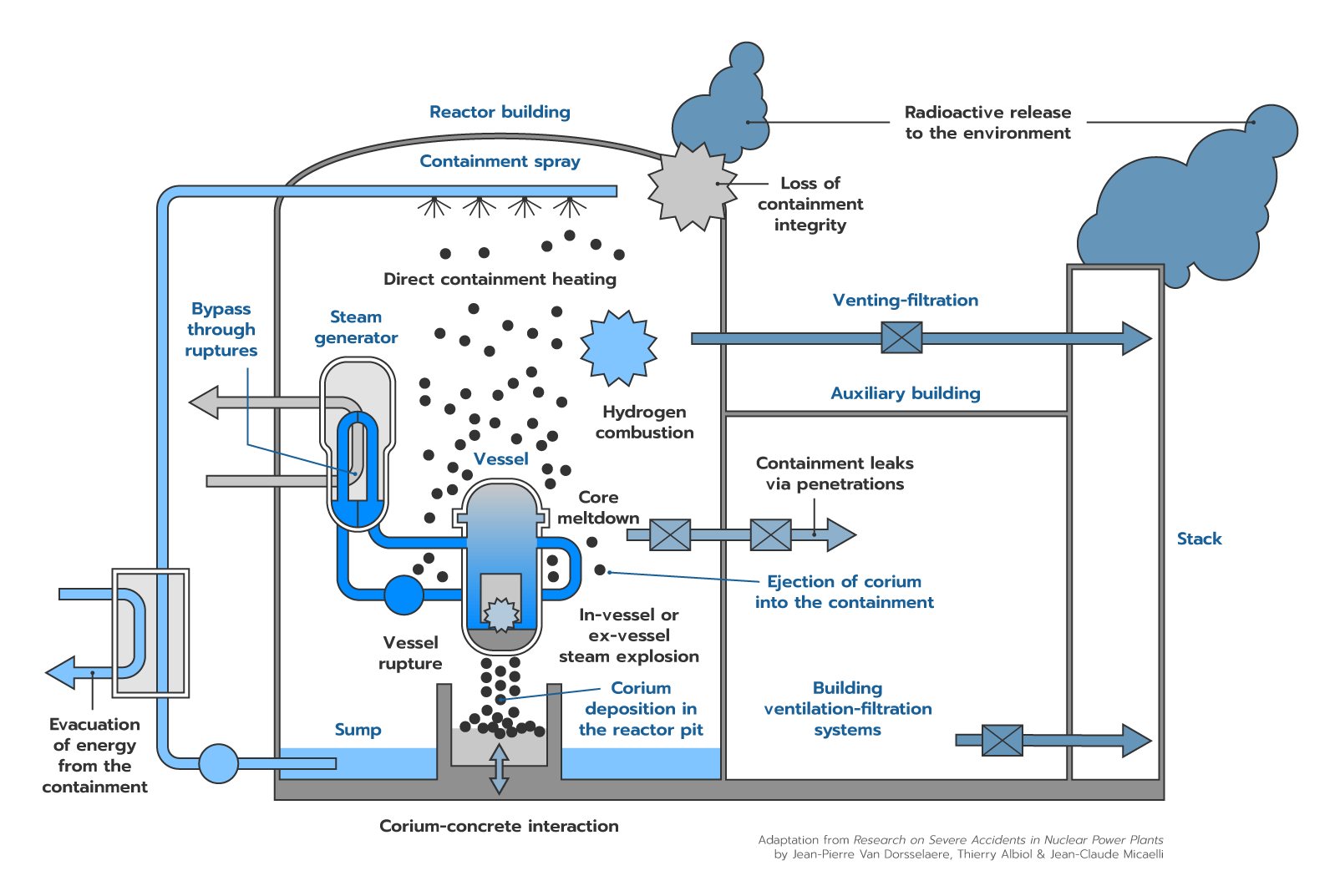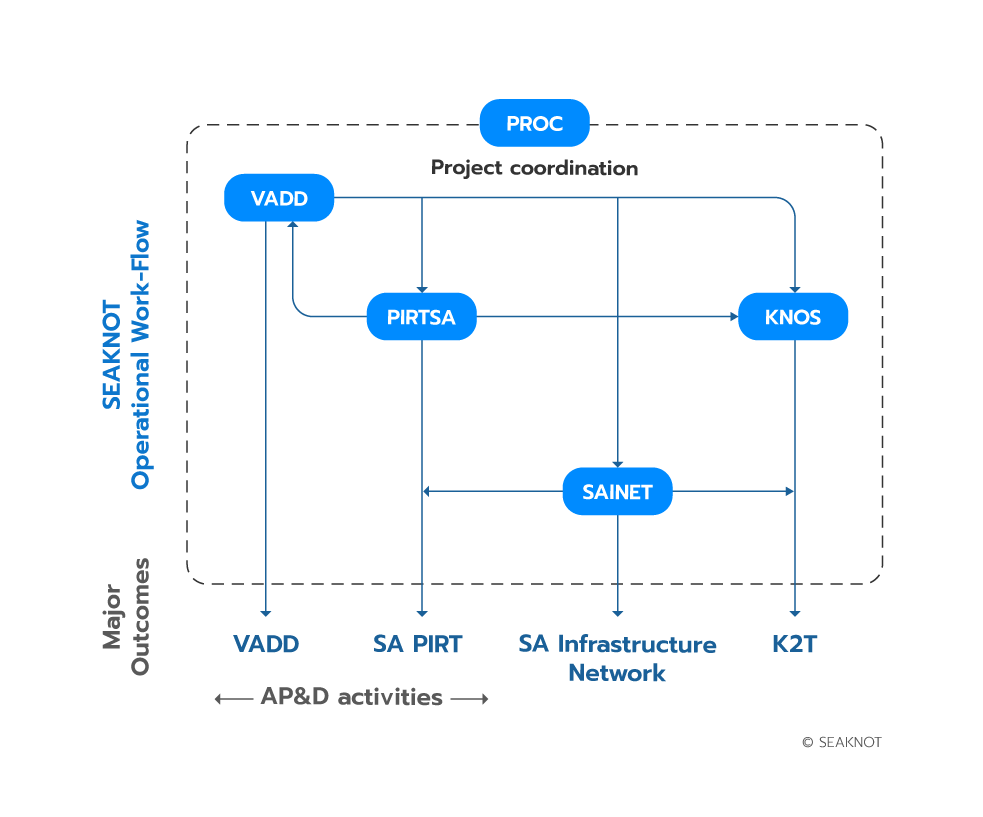Objectives, Impacts & Outcomes
Objectives
- To carry out a sound and critical analysis of the current knowledge on SAs. Based on this knowledge, recommendations will be given to significantly reduce risks associated with existing Gen II and Gen III reactors, as well as forthcoming nuclear technologies such as SMLWRs and near-term ATFs. SEAKNOT will propose a target-driven research plan and implementation strategy to efficiently mitigate and practically eliminate SA consequences.
- To identify the future experimental research needs required to support and further optimise SA mitigation measures. Practical elimination of the consequences associated with an extended core melt or spent fuel damage will also be assessed. All the LWRs in operation in the EU with current and/or advanced technologies will be considered. An assessment of the EU SA experimental facilities and their research needs will also be included along with the proposal of an experimental infrastructure platform.
- To strengthen the background and skills of young generations in the field. A range of dissemination and communication activities including a mobility programme will be the backbone of an efficient Knowledge and Know-how Transfer (K2T) from senior scientists and engineers to the younger generation.
By identifying emerging research needs, placing a special focus on K2T, and achieving its overall objectives, the SEAKNOT project will contribute to an effective promotion of safety culture in the coming decade and beyond.

Expected Impacts
Aiming to make Europe a leader in SA research, SEAKNOT will produce a roadmap for SA research in the coming decade and beyond, based on three major pillars:
1.
The prioritisation of phenomena worth further investigating according to the safety significance and lack of knowledge assessed in a quantitative Phenomena Identification and Ranking Table (PIRT) exercise.
2.
A thorough examination of the SA experimental infrastructure in Europe, its potential for the identified research needs and their priorities, and the building of a unique worldwide experimental SA infrastructure.
3.
A substantial contribution to strengthening the young workforce through an ambitious plan of dissemination and communication specifically directed towards young nuclear researchers and engineers.
Outcomes
- Roadmap for SA research over the next decade
- SA Phenomena Identification Ranking Table (SA PIRT)
- Validation SA Database Directory (SADD)
- Experimental infrastructure network (SAINET)
- Strengthening of young workforce (SA Textbook, SAP Course, ERMSAR Conference, mobility grants…)



